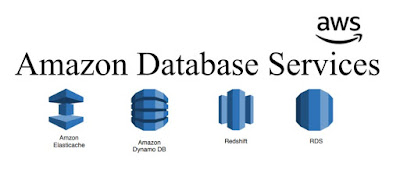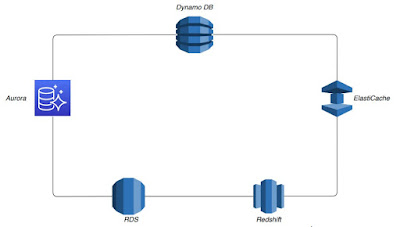AWS Database Services
In most cases, organizations have different types of databases powering their applications. AWS offers a number of robust, scalable and secured database services which makes them an ideal substitute for on-premise databases. In this article, we’ll compare some of the most popular AWS database services to help you select the right option for your organization.
Use Cases of AWS Database Services
- Back-end relational database for any enterprise application
- Back-end database for web applications
- Source systems for data warehouses
- Data marts and small data warehouses
Types of AWS Database Services
AWS provides a wide range of fully managed, purpose-built and both relational and non-relational database services specially designed to handle any kind of application requirements. From fully managed database services, a data warehouse for analytics, to an in-memory data store for caching, AWS has got it all.
You will find an AWS Database Service for just about any kind of database requirements. One can import an existing MySQL, Oracle, or Microsoft SQL database into Amazon’s databases or even build their own relational or NoSQL databases from scratch.
Following are different types of database services provided by AWS:
Relational Database:
In relational databases, the data is usually stored in a tabular format. Relational databases particularly use structured query language (SQL) to run queries to perform operations such as insertion, updating, deletion, and more. AWS provides following relational database services.
- Amazon RDS
- Amazon Redshift
- Amazon Aurora
Key–Value Database:
The key–value database is a type of NoSQL database where the method of having a value attached to a key is used to store data. Meaning that the data is composed of two elements, keys and values.
- Amazon DynamoDB
In-memory Database:
This type of database is primarily based on the main memory for computer data storage. Basically, an in-memory database keeps the whole data in the RAM. Meaning that each time you access the data, you only access the main memory and not any disk. And the reason that the main memory is faster than any disk is why in-memory databases are so popular.
- Amazon ElastiCache
Moving forward, let’s get acquainted with all these database services starting with Relational Database Services.
What Is AWS RDS?
One of the most commonly used database services provided by AWS that falls under the category of relational databases is Amazon RDS. Amazon RDS is a service that supports various open-source relational database products including the database products provided by AWS itself. RDS is used to set up, operate, and scale a relational database in the cloud. It automates administrative tasks such as hardware provisioning, database setup, backups, and more.
Following are some of the benefits of using RDS:
- It provides high performance and is fast to scale.
- It provides high availability as a result of two distinct replication features, namely, Multi-AZ deployments and Read Replicas.
- It automatically takes care of Backup and Restore by patching up the AWS database software.
- It also takes care of Maintenance and Upgrades, automatically.
What Is Amazon AWS Redshift?
Amazon Redshift is a fast and fully managed data warehouse service in the cloud. Amazon affirms that the Redshift data warehouse delivers ten times faster performance than other data warehouses utilizing Machine Learning techniques. The Redshift data warehouse can be scaled up to petabyte or more as per the requirements.
Following are some of the benefits of using Amazon Redshift:
- Parallel queries across multiple nodes can be performed
- Automatically backed up to Amazon S3
- Cost-effective over other data warehouse solutions
- Built-in security as Amazon Redshift provides end-to-end encryption and enables users to configure firewall rules
Now navigate on AWS Database Services blog to understand about remaining AWS Auro, AWS DynamoDB, and AWS ElastiCache database services.


Very useful information.Thankyou so much for this wonderful blog…Great work keep going. Looking for the best database services in Hyderabad hire Cyanous software solutions now.
ReplyDeleteBest Database services in Hyderabad
Best software & web development company in Hyderabad
I found your this post while searching for information about blog-related research ... It's a good post .. keep posting and updating information. creative designer
ReplyDeleteEstablishing an Amazon Redshift Cloud Data Warehouse Consulting in DataStage is a crucial step to enable data integration and transformation processes with the power and scalability of Amazon’s cloud data warehousing solution. Here, we will guide you through the process of setting up the connection in DataStage, ensuring a seamless data flow between your DataStage environment and Amazon Redshift.
ReplyDelete